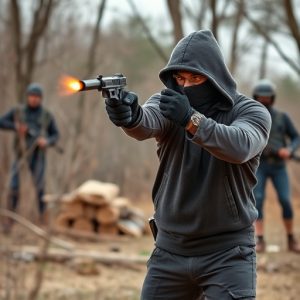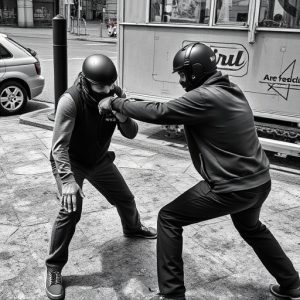Police-Grade Stun Guns: Voltage, Safety, and Selection Guide
When selecting a police-grade stun gun, consider its voltage range (5,000V-15,000V) for safety and e…….
When selecting a police-grade stun gun, consider its voltage range (5,000V-15,000V) for safety and effectiveness against diverse assailants. Look for advanced safety features, durable construction, and intuitive controls. Understand optimal distance ranges (up to 20-35 feet) based on target size and environment. Key factors include voltage, jolt strength, durability, and build quality. Proper maintenance involves regular cleaning, secure storage, and battery life monitoring. "Police Grade Stun Gun Options" offer varied features catering to diverse safety needs.
“Uncover the essential safety aspects of police-grade stun guns, crucial tools for personal defense. Understanding voltage ranges is key; knowing what’s suitable for your needs ensures effectiveness and minimizes risks. This guide delves into the specifications that matter—from the features and standards of top-tier models to best practices for safe range distances. We explore factors to consider when choosing a stun gun model, along with vital maintenance tips, ensuring optimal performance and peace of mind. Discover your ideal police-grade stun gun options here.”
- Understanding Stun Gun Voltage: What It Means for Safety
- Police-Grade Stun Guns: Features and Standards
- Specifying Safe Range Distances: Best Practices
- Key Factors to Consider When Choosing a Stun Gun Model
- Maintenance and Safety Precautions for Optimal Performance
Understanding Stun Gun Voltage: What It Means for Safety
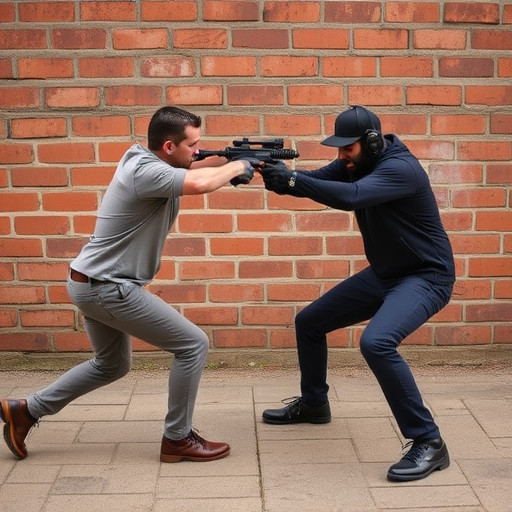
When considering a stun gun, understanding the voltage range is paramount for safety and effectiveness. Stun guns deliver an electrical shock through two metal prongs or contacts that disrupt the nervous system, causing temporary incapacitation. The voltage is measured in volts (V) and represents the force of the electric current. Police-grade stun guns typically offer a wide voltage range to ensure they can subdue individuals of varying sizes and strength levels.
Options with higher voltage outputs (typically 12,000V or above) are designed to penetrate clothing and pose a significant threat to larger or more aggressive assailants. However, lower voltage settings (around 5,000V – 7,000V) can still effectively disable smaller targets without causing severe injury. Knowing the specific voltage range of a stun gun allows users to make informed decisions based on their personal safety needs and legal restrictions in their region.
Police-Grade Stun Guns: Features and Standards
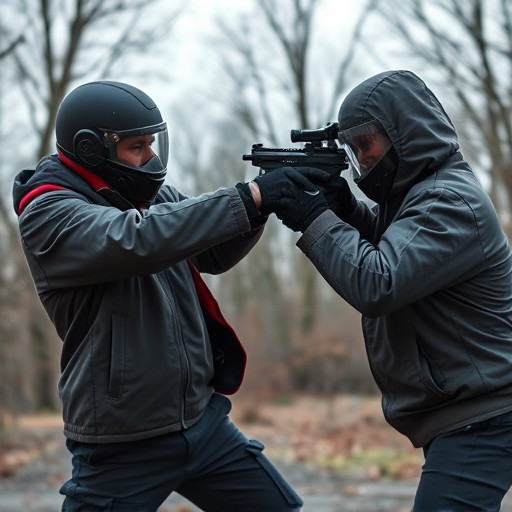
Police-Grade Stun Guns are designed with safety and effectiveness in mind, adhering to stringent standards set by law enforcement agencies. These stun devices offer a range of voltage options, typically varying from 5,000 to 15,000 volts. Such high voltage levels ensure the ability to incapacitate an attacker temporarily, providing users with valuable time to escape or seek help. The precision in manufacturing ensures these stun guns deliver consistent and reliable performance, meeting the demands of professional law enforcement officers in the field.
The features incorporated in Police-Grade Stun Guns include advanced safety mechanisms, such as automatic shut-off switches and durable construction for resilience against extreme conditions. These tools are designed to be user-friendly, with intuitive controls that enable quick activation during high-stress situations. With a focus on quality and reliability, these stun guns represent the pinnacle of self-defense technology within the law enforcement community, offering effective and safe protection options among various Police Grade Stun Gun Options available in the market.
Specifying Safe Range Distances: Best Practices
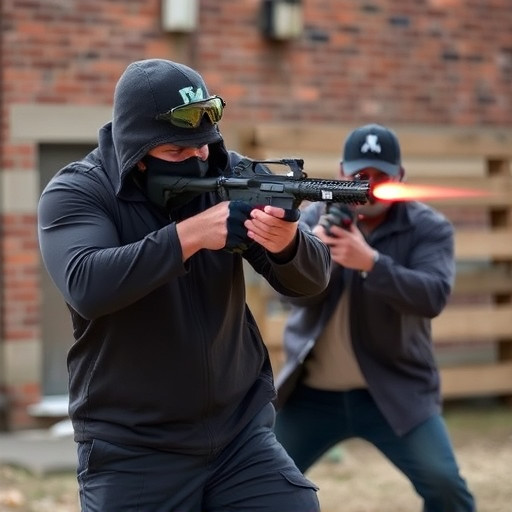
When considering a police-grade stun gun, understanding safe range distances is paramount for responsible use and maximum effectiveness. The optimal distance to deploy a stun gun varies based on factors like target size, environment, and personal safety. As a general guideline, most stun guns are designed to be effective up to 20 feet (6 meters) away, allowing users enough reaction time while maintaining non-lethal force. However, for larger targets or in open spaces, some models can reach as far as 35 feet (10.7 meters), ensuring a wider safety zone.
Best practices suggest maintaining at least one clear hand’s length between you and the target to avoid accidental discharge. Additionally, keep in mind that stun guns are not designed for close-quarters combat; they excel in providing a powerful but controlled response from a safe distance. Familiarize yourself with your specific model’s user manual for precise range specifications, as variations exist among police-grade stun gun options, catering to different needs and scenarios.
Key Factors to Consider When Choosing a Stun Gun Model

When choosing a stun gun, several key factors come into play, especially if you’re considering police grade stun gun options. First and foremost, voltage range is critical. Stun guns deliver an electric shock through a metal probe or contacts to temporarily disable an attacker. The voltage range should be enough to ensure effectiveness against larger targets like men while remaining safe for casual use. Most police-grade stun guns offer a range of 50,000 to 120,000 volts, which is designed to incapacitate without causing serious harm.
Additionally, jolt strength or current output matters. This refers to the intensity of the electric pulse delivered. Higher jolt strengths (measured in amps) can cause more discomfort and quicker incapacitation but could also increase the risk of injury if not used properly. Look for models that offer adjustable settings to tailor the stun gun’s power to different situations and users. Durability and build quality are also essential, especially for heavy-duty use, ensuring the stun gun can withstand impacts and various environmental conditions without compromising performance or safety.
Maintenance and Safety Precautions for Optimal Performance

Maintaining and adhering to safety precautions is paramount when owning a stun gun, especially with police-grade options that deliver higher voltage. Regular cleaning and storage play a crucial role in ensuring optimal performance. Users should wipe down their stun gun after each use, following manufacturer guidelines for recommended cleaning solutions. This simple step prevents the buildup of static electricity, which can reduce effectiveness over time. Stun guns should be stored in secure, designated locations, away from children and unauthorized individuals. Using the provided carrying case or a custom-fit holster ensures the device remains intact and safe, maintaining its shock-inducing capabilities.
Additionally, understanding the stun gun’s safety features is essential. Many police-grade models feature advanced safety mechanisms like automatic shut-off after deployment, preventing accidental activation during storage. Regular maintenance also involves checking battery life and replacing them as recommended by the manufacturer. This proactive approach guarantees that your stun gun remains a reliable personal safety tool, ready for use when needed.
When choosing a police-grade stun gun, understanding voltage ranges and safety specifications is paramount. By adhering to best practices for range distances and considering key factors like battery life and durability, you can ensure optimal performance and peace of mind. Remember, proper maintenance and safety precautions are essential to leveraging the protection offered by these powerful tools, making them reliable companions in challenging situations. With the right Stun Gun options available, staying safe is within reach.

